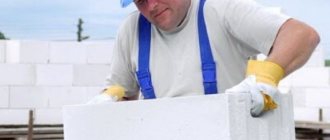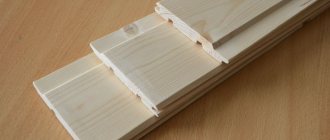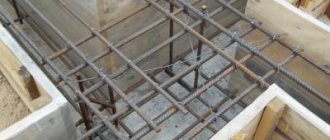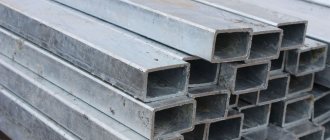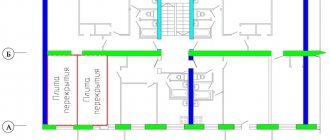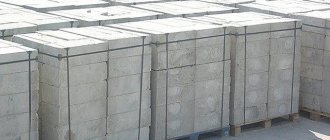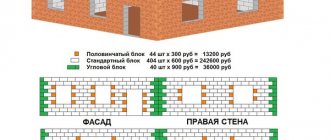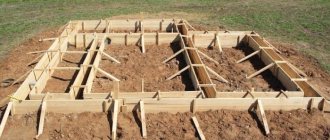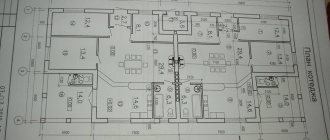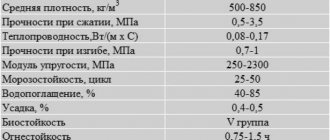Shell rocks are blocks of standard length, width and height. In practice, dimensions may deviate by 1-32 cm in one direction or another, but in general the products are approximately the same. The shell rock block has the following dimensions: 0.38x0.18x0.18. Knowing this, you can easily calculate how much stone is needed to build a wall of any size, as well as the entire house, including interior partitions. In addition to calculating the shell rock, you need to calculate the volume of the masonry mortar.
You need to be patient
A common mistake is for beginners to think that the whole calculation comes down to a simple formula. Many take into account only a few parameters:
- wall height;
- width of walls;
- length of walls;
- wall thickness.
In order to correctly build a one-story house 6x6 or 6x8, the maximum and minimum length of the timber that is planned to be used for construction is taken into account. There are beams on sale, the length of which ranges from 2 to 6 m. Much less often you can see a length of 4 or 5 m. The second significant nuance is that the rows of masonry or crowns are always made of solid material. There should be no joints. If they are present, then heat loss cannot be avoided.
Calculation example
To accurately calculate the number of floorboards in a house, it is better to consider the counting procedure using a specific example.
Step lag for floorboards and laying the boards
Let’s assume that in your house you want to cover a room with dimensions of 5x6 m with a 50 mm thick floorboard. We calculate the volume of lumber and the number of products in the following sequence:
- Find the area of the room: 6x5=30 m².
- Since we decided to use a board with a thickness of 50 mm or 0.05 m, the lag step can be 1 meter.
- Knowing the thickness of the element and the area of the room, we obtain the volume of lumber: 30 m² x 0.05 m = 1.5 m³.
- Now using a calculator, you can calculate how many floorboards you will need. To do this, knowing the dimensions of the floorboard, we calculate its volume: 2m x 0.05 m x 0.13 m = 0.013 m³. Now we divide the total volume of lumber by the resulting number for an element with a thickness of 50 mm: 1.5: 0.013 = 115 boards.
Thus, using a regular calculator, you can calculate the need for other lumber for building a house: paneling, timber, slats.
Practical recommendations
Taking into account the dimensions of window and door openings will help to correctly determine the required number of cubes. As a rule, about 20% of the already ordered volume is “added” to them. Unfortunately, the indicator cannot be calculated with pinpoint accuracy. You have to take it with a reserve. It is useful for beginners to know that even professionals retain scraps, so it is better to make, as was said earlier, a small reserve. For example, a person plans to build a country house. Naturally drying profiled timber is used in the case where it is planned to live in the building during the summer season. If they will live inside all year, then chamber-drying material is used as a basis.
How many cubes of timber are needed for a 10 by 10 house calculator:
The perimeter of the structure is 4X10 = 40 meters. Internal walls – 12+4=16 meters. In total, one belt of our house will need 56 meters (40+16). The height according to the project is 3.5 meters, that is, 350 cm. We divide this result by the cross-section of the beam (10 cm), the resulting value (35) is the number of belts of our future home. Let's proceed to the final stage of calculation: 1 belt is 56 meters, the number of belts is 35, a total of 56X35 = 1960 meters of timber per house.
An example of a log house
Let's say we want to use larch beams 6 meters long to build a house. In this case, the required amount of timber will be 326.66 (1960/6). Therefore, we need to purchase at least 326 pieces.
Calculator for calculating timber for building a house video
Conclusion - timber is worth buying with a reserve.
Of course, during construction work, unforeseen situations may occur, such as accidental defects in work, inaccurate measurements, and so on. Experienced builders advise always purchasing material in reserve. Therefore, when calculating the volume of lumber, you should always focus on a larger amount of consumption. Therefore, a few additional pieces of timber will not be ruinous for the budget. But such a safety net will help to avoid problems with excessive consumption of material and will also shorten the duration of the work itself.
So we calculated how much timber is needed for a 10 by 10 house. Of course, the construction of each specific object has its own characteristics, but in general, the calculation of lumber consumption is identical to that given in the article. We hope you found this article helpful. Happy construction.
Project development
A well-designed project will help you quickly calculate the required volume of material. It takes into account the area of the building and future rooms:
- living room;
- kitchen;
- toilet;
- bedroom;
- boiler room and so on.
Let's imagine that a 150x150 beam is taken as a basis, and the total area of the building is 10x10 m. The total length of the walls can be determined using the formula: 10x5+4x4=66 m. Of the total number of walls, 4 are external and 5 are internal. The average height of the walls reaches 3 m, but this is not the limit. Everyone chooses the option that suits them. It is enough to enter the required value into the construction calculator. In order to determine the required volume of material, calculations are carried out: 66x3x0.15 = 29.7 m3. It should be noted right away that the resulting figure is approximate. Taking into account several factors will help make it more accurate.
- the number of internal partitions - for them, timber of a smaller cross-section is taken;
- number of load-bearing walls;
- number of windows;
- the total number of doors in the house.
To make windows, take timber with a cross section of 100x100 mm. The area occupied by windows is calculated as follows: 1.5x1x4 +1.5x0.5=6.75. The result obtained is multiplied by the selected wall thickness - 0.15. The result is the required volume of material. The second step is to carry out similar calculations with doorways.
Recommendations for calculating the required number of boards
When calculating floor boards, it is better to use a regular desktop calculator. Since the price of all lumber upon sale is charged per cube, it is important to be able to calculate the need for this particular unit of measurement. This way, not only the number of boards is calculated, but also other lumber, for example, timber, slats, etc. The thing is that products with the same cross-section may differ in length. Therefore, after determining the volume, you can understand how many floorboards there will be in one cube.
It is important to know: when purchasing boards made from valuable wood, products are sold individually. The thing is that the price of such coatings is too high, and when calculating in cubes there is a small error.
When calculating, it is better to use a regular calculator. This way you can get a more accurate result and take into account all the nuances of the future design of the house. Although, if you need to find out how many cubes of boards, for example, 50 mm thick, will be needed to construct a floor, you can also use an online calculator. He can perform such a simple calculation correctly. However, it is always a good idea to be able to count the amount of lumber by hand.
What methods are there for joining floor boards together?
When making calculations, expansion gaps near the walls must be taken into account.
When building a house or laying a floor, the calculations are carried out in the same order:
- First you need to calculate the total volume of lumber in cubes. Knowing the moisture content of the wood, you can determine the weight of the entire material. This will help you decide which product delivery method to choose.
Advice: when ordering a carrier, it is better to indicate an inflated weight (10-15% more). This way you won’t have problems with the load, because the wood moisture content stated by the manufacturer may be a little more or less.
- Next, knowing the dimensions of the boards, you need to calculate the volume of one element. Then you can find out how many products will be in the cube. Multiplying this number by the number of cubes will give you the total number of floorboards for your floor design.
However, such a simple calculation is applicable for edged elements, because they are processed on all sides and when they are stacked, there are practically no gaps left. To calculate how many cubes of unedged boards are needed for a floor, you will have to use a correction factor, because due to the untreated sides of the product, too many gaps will remain when stacked.
HOW MANY FOAM BLOCKS DO YOU NEED TO BUILD A HOUSE?
| Number of blocks in a cube length 600 mm | Number of blocks in a cube length 625 mm | ||
| Dimensions, mm | Pieces per cube | Dimensions, mm | Pieces per cube |
| 50x200x600 | 166,7 | 50x200x625 | 160 |
| 75x200x600 | 111,1 | 75x200x625 | 106,7 |
| 100x200x600 | 83,3 | 100x200x625 | 80 |
| 125x200x600 | 66,7 | 125x200x625 | 64 |
| 150x200x600 | 55,6 | 150x200x625 | 53,3 |
| 175x200x600 | 47,6 | 175x200x625 | 45,7 |
| 250x200x600 | 33,3 | 250x200x625 | 32 |
| 300x200x600 | 27,8 | 300x200x625 | 26,7 |
| 375x200x600 | 22,2 | 375x200x625 | 21,3 |
| 400x200x600 | 20,8 | 400x200x625 | 20 |
| 500x200x600 | 16,7 | 500x200x625 | 16 |
| Dimensions, mm | Pieces per cube | Dimensions, mm | Pieces per cube |
| 50x250x600 | 133,3 | 50x250x625 | 128 |
| 75x250x600 | 88,9 | 75x250x625 | 85,3 |
| 100x250x600 | 66,7 | 100x250x625 | 64 |
| 125x250x600 | 53,3 | 125x250x625 | 51,2 |
| 150x250x600 | 44,4 | 150x250x625 | 42,7 |
| 175x250x600 | 38,1 | 175x250x625 | 36,6 |
| 200x250x600 | 33,3 | 200x250x625 | 32 |
| 300x250x600 | 22,2 | 300x250x625 | 21,3 |
| 375x250x600 | 17,8 | 375x250x625 | 17,1 |
| 400x250x600 | 16,7 | 400x250x625 | 16 |
| 500x250x600 | 13,3 | 500x250x625 | 12,8 |
For more information about standard sizes, which and where it is better to use, read here
Before deciding to build a permanent house from foam blocks, every owner wants to know how many of them will be needed to build the house, so that the total cost of the material can be calculated. And from here calculate the cost of building the entire house. After all, before deciding to build, you need to determine your financial capabilities, at least approximately.
You can view our special offers on the Home page
So, in order to calculate the total number of blocks that will be needed to build a house measuring 10x9x3, you need to remember your school knowledge in the field of geometry and mathematics. The house to be built will have a rectangular shape, two sides of which will have a length of 10 m, and the other two will have a width of 9 m, and its height will, accordingly, be 3 m. Therefore, in order to first determine the perimeter of the building walls, it is necessary to sum up their length: 10 + 9 + 10 + 9 = 38 linear meters. Now, in order to get the sum of the square footage of the house, you need to multiply the result obtained by the height of the building: 38x3=114m2.
The next step will be to find out the number of cubic meters in the masonry of all the walls. Walls, as a rule, are built with a thickness of 0.3 m, so we multiply the sum of square meters by the thickness of the wall: 114x0.3 and we get 34.2 m3. This is the figure required for the total number of blocks to build the entire house. To find out individually how many of them are needed, you need to calculate the volume of the block from which the house is supposed to be built. For example, a block of size 300x200x600mm will be used: 0.3x0.2x0.6 (we convert the values into meters for convenience), as a result we get 0.036m. And now a simple action remains: divide the total number of cubic meters by the volume of one block - 34.2:0.036 = 950. Thus, to build a house measuring 10x9x3m, 950 pieces of foam blocks will be required.
If you are still in doubt about what to choose, read our material: foam block or gas block
Using the same method, you can calculate the total amount of material, both for a multi-story building and for a small private building in the form of a bathhouse, sauna, etc.
Also, to begin construction, it is also necessary to calculate the total amount of required adhesive solution. Taking into account that 25-30 kg are needed per cubic meter of masonry, we multiply the total number of cubic meters by the number of kilograms of one of them: 34.2x30 = 1026 kg.
In approximately the same way, you can find out how many blocks measuring 300x200x600 fit in one cubic meter.
Calculation of concrete for the foundation of a house.
The foundation is a very important and expensive element of a building. The durability and strength of a house or outbuilding depends on how correctly it is built (poured), and given that, depending on the specific conditions, the cost of a strip, monolithic, columnar foundation can range from 20 to 50 percent of the construction cost, it is very important to correctly calculate how much concrete will be needed for its construction.
How much concrete is needed for a strip foundation?
When calculating concrete for a strip foundation, the following parameters are required: the length of the strip, its width and height. The height is taken to be the distance from the sole to the edge. Usually the edge is located 50-60 cm above the ground (see picture below).
If the depth of the base (the part located underground) is 160 cm and the size of its part above the ground is 60 cm, the result will be 220 cm. The depth of laying a monolithic strip base is determined depending on the properties of the soil and the type of concrete.
It is important that the sole is at least 15 cm below the soil freezing level.
The width of the tape depends on the weight of the building, the thickness of the walls and the soil. In accordance with the load, the required number of longitudinal reinforcement rods of the required diameter is installed in the belt design, and the pitch and diameter of the clamps are also determined.
How to calculate how many cubes of concrete are needed for a strip foundation?
The foundation is a very important and expensive element of a building.
The durability and strength of a house or outbuilding depends on how correctly it is built (poured), and given that, depending on the specific conditions, the cost of a strip foundation can range from 30 to 70 percent of the construction cost, it is very important to correctly calculate how much concrete will be needed for its construction. In this case, the following factors influence the design of the strip foundation:
- Relief of the land plot for construction of the structure;
- Soil type;
- Soil freezing depth. Affects the amount of foundation heaving;
- Height of groundwater. It also affects the amount of foundation heaving (linear movement in winter).
The calculations use the usual mathematical and geometric formulas that are taught as part of the high school curriculum.
